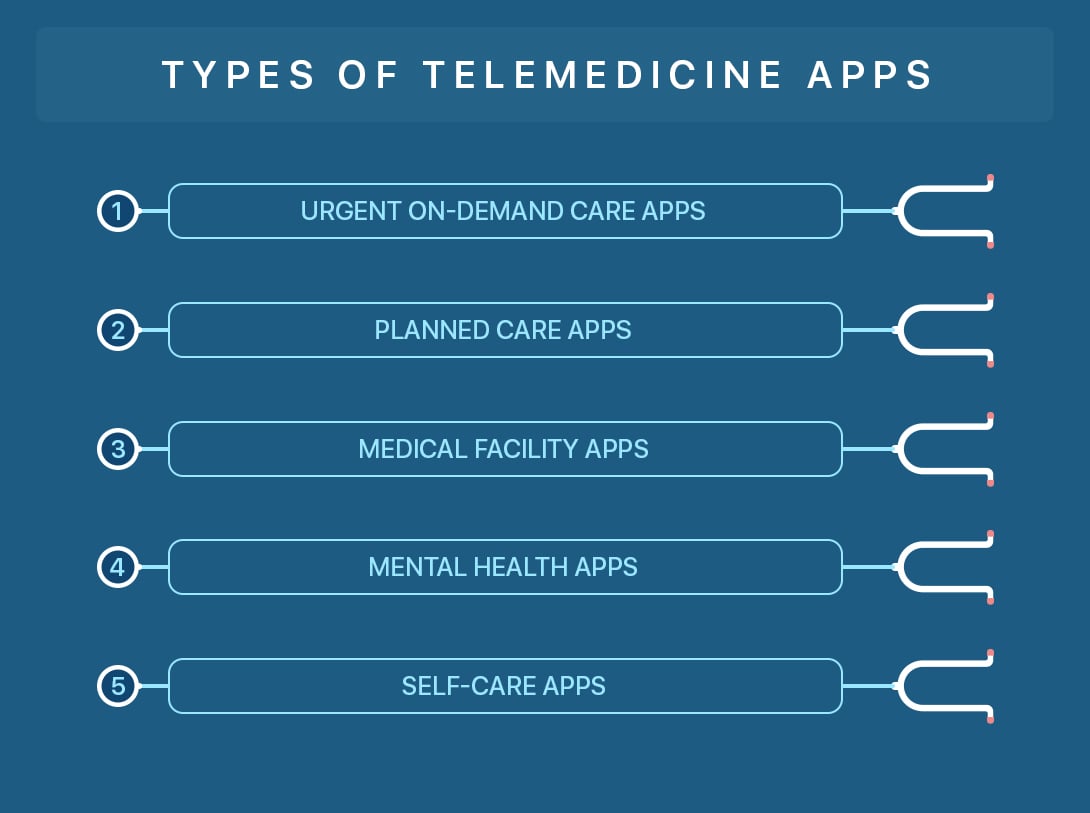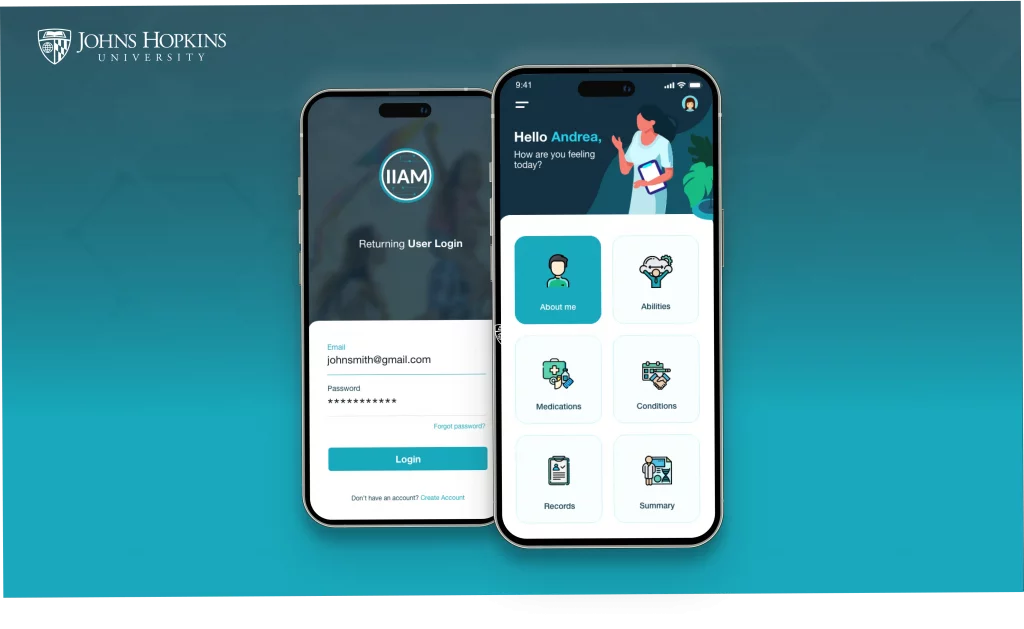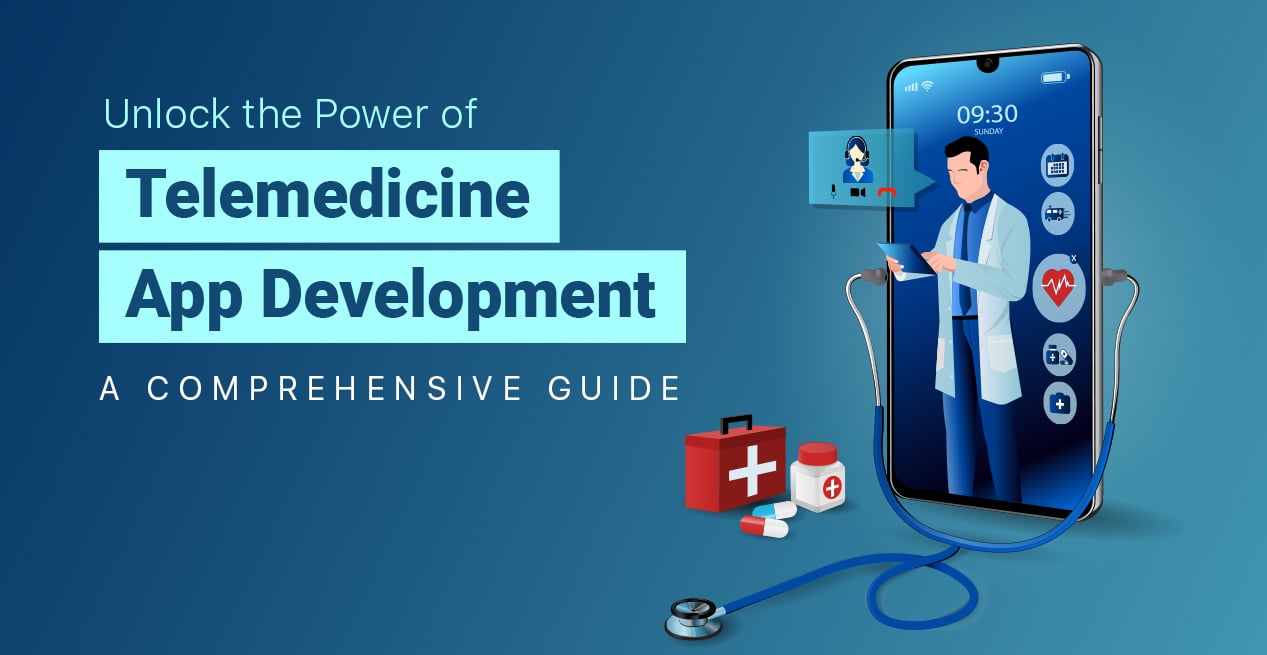-
Telemedicine App Development: Overview
-
What is a Telemedicine App and Why do You Need One?
- Types of Telemedicine Apps
- Popular Telemedicine App Examples
-
How Important is Telemedicine App Development?
-
Benefits of Telemedicine Apps
-
Telemedicine App Development: Essential Features
- Telemedicine App Development: Technology Trends
-
Telemedicine App Development Cost
-
How OpenXcell can Help You with Telemedicine App Development?
Telemedicine App Development: Overview
In recent years, healthcare access has undergone a significant transformation, largely due to the emergence of telemedicine apps. This innovative technology, known as Telemedicine App Development, is poised to become an integral aspect of healthcare in the digital age. Telemedicine apps offer individuals the convenience of receiving medical advice, consultations, and even treatments from the comfort of their homes.
With this advancement, healthcare has become more accessible, cost-effective, and convenient than ever before. Patients can now access medical treatment on-demand, regardless of their location or the time of day. Furthermore, healthcare professionals can remotely consult with patients, monitor their progress, and prescribe medication through these apps.
The emerging market looks very promising not only for patients and healthcare providers seeking a new way to connect but also for software companies wanting to take advantage of its potential. Here is a comprehensive guide on how to develop a telemedicine app, exploring various aspects of telemedicine software development.
What is a Telemedicine App and Why do You Need One?
Telemedicine applications are software products that make healthcare more accessible to patients and easier for clinicians to deliver. The patient’s side of a telehealth solution usually consists of finding a doctor, scheduling an appointment, uploading relevant documents, and connecting to the doctor via text, voice, or video. On the caregiver side, the doctor reviews the patient’s file, confirms or cancels appointments, and refers them to other specialists as needed.
A remote consultation was first conducted by the Nebraska Psychiatric Institute in the late 1950s. However, the COVID-19 pandemic in 2020 and 2021 undeniably boosted telemedicine as an industry in an unprecedented way. In some European countries, close to 50% of clinicians conducted consultations remotely via telemedicine in 2020, and the number continues to rise. Telemedicine companies have grown rapidly in the past few years, but there is still plenty of room for new players. Now is the time to consider entering the telehealth industry if you are interested in telemedicine app development.
Types of Telemedicine Apps

In a rapidly growing industry like health tech, telemedicine is constantly coming up with new solutions to people’s problems. The entire telemedicine system can be broken down into a few types of medical apps for patients, healthcare providers, and everyone else. Globally, we are seeing a variety of telemedicine applications. Here are the types of telemedicine applications on the market.
Urgent on-demand care apps
When we think of telemedicine in action, this is the first type of app that comes to mind. Such solutions must support two-way video, audio, and preferably text chat communications to let the consumer and service provider communicate via the most convenient channel. EHRs should provide scheduling capability and the ability to access patients’ data.
Planned care apps
They are used to monitor patients’ conditions 24/7 and conduct routine examinations. In addition to the standard functionality described above, the app should also be able to store and forward test results, images, and case histories, as well as retrieve and analyze them.
Medical facility apps
A clinic’s employees can use these solutions to automate routine operations, streamline shop floor processes, and improve their organization’s healthcare pipeline.
Mental health apps
The use of video and audio chat can help people cope with anxiety, depression, stress, and other psychological conditions.
Self-care apps
People who choose disease prevention rather than disease treatment can benefit from such apps. Their role is to monitor a person’s health and recommend diet and exercise. Self-care apps can be made more effective when combined with wearable gizmos that measure vital health indices (pulse rate, walking distance, blood pressure, etc.).
Many other types of customized telemedicine apps can be created depending on your needs. For example, we built a patient management system for our client. Check out the case study to see how we created a platform that would allow patients to access all their medical information on mobile, locally, and via email.

Popular Telemedicine App Examples
1. Doctor on Demand
Through this platform, users can access a wide range of medical and mental health professionals. The Doctor on Demand service is available both on desktop computers (PCs) and mobile devices for patients suffering from flu symptoms, chronic health conditions, migraines, seasonal allergies, etc. Additionally, this telemedicine app example could be used as a preventative care or seasonal checkup app.
2. LemonAid
This is an American telehealth platform that delivers medicine to patients all over the country. A team of doctors reviews a user’s health history before granting a prescription and ordering options.
3. MoMedX
With MoMedX, you have separate versions for patients, nurses, and doctors. It is used by patients to communicate with specialists, book appointments, and check personal information like test results and instructions. The other versions for medical experts have more robust functionality for monitoring health, creating health plans, and performing assessments.
How Important is Telemedicine App Development?
Telemedicine has become more convenient due to the pandemic, and patients continue to search for accessible healthcare providers. Therefore, healthcare companies are enhancing the patient experience for digital-age patients. Providing patients with digital-focused offerings is becoming more crucial.
Market analysts predict that by 2027, the market value of EHRs will reach 47.2 billion dollars, up from 29 billion dollars in 2020.
Transitioning to the new solution and services was also challenging due to strict regulations and reimbursement policies. The situation has changed dramatically since such restrictions were lifted after COVID-19 hit, and regulatory bodies asked enterprise healthcare providers to take action to continue seeing patients while in-person clinics were closed. The same report also mentioned that American adoption of telemedicine services will reach nearly 280 billion dollars by 2025.

Benefits of Telemedicine Apps
Telehealth apps are most useful to two groups of people. Doctors and patients. So, what do they get by embracing a telemedicine app development project?
| For healthcare providers | For patients |
| Accessibility | Inclusivity |
| Time-saving | Time-saving |
| Less paperwork | High-quality services |
| Cost-efficiency | Cost-efficiency |
| Integration with EHR | 24×7 healthcare services |
Telemedicine App Development: Essential Features
| Doctor’s side | Patient’s side |
| Registration | Registration |
| Viewing EHRs | Profile management |
| Indicating experience | Search and filters |
| Video conferencing | Video conferencing |
| Text chat | Text chat |
| Managing calendar | Booking an appointment |
| Receiving payments | Sending money |
| Monitoring grades | Rating doctors |
| Notifications | Notifications |
Telemedicine App Development: Technology Trends
Telemedicine apps make healthcare no longer a geographical or logistical barrier. Virtual care has become a fully-fledged solution due to advances in technologies, including development methods, hosting, and customer-focused innovation. A few popular technologies are influencing the growth of telemedicine apps.
Big data
Telemedicine apps generate and collect huge amounts of patient data, including medical records, images, and real-time monitoring. Analytics tools can assist with the discovery of patterns, trends, and insights that can improve clinical decision-making, improve population health management, and drive telemedicine research and innovation.
The Internet of Things (IoT)
Telemedicine apps can receive real-time patient data from IoT devices like wearables and remote patient monitoring devices. A variety of health-related data are collected in this manner, including vital signs, activity levels, and medication adherence. Healthcare providers can monitor patients remotely through IoT-integrated telemedicine apps, provide timely interventions, and deliver individualized care based on continuous data collection.
Artificial intelligence (AI)
Telemedicine apps can benefit from Artificial Intelligence by offering advanced features such as image and pattern recognition, voice recognition, chatbot interactions, and predictive analytics for personalized patient care. The use of Artificial Intelligence can provide accurate diagnosis and treatment recommendations based on large amounts of patient data.
Deep learning
A subset of AI called deep learning algorithms is used in telemedicine apps to analyze X-rays, CT scans, and pathology slides. As a result of these algorithms, healthcare providers can diagnose diseases, identify abnormalities, and recommend treatment options to patients. The use of deep learning to enhance image analysis supports remote diagnosis and reduces the need for in-person consultations.
Blockchain
Telemedicine app development with blockchain technology offers enhanced security and privacy. It allows secure storage and sharing of patient health records, preventing unauthorized access. In addition to facilitating secure and auditable transactions, blockchain can be used to manage telemedicine billing and payments and verify consent for data sharing. Telemedicine applications can be made more secure and reliable with blockchain app development services.
Cloud storage
Telemedicine apps can securely store and scale patient data using cloud storage. Patients’ records, medical images, test results, and treatment plans can be securely accessed and shared by healthcare providers anywhere, anytime. Healthcare providers can exchange data seamlessly using cloud storage, improving care coordination and enabling remote consultations.
Telemedicine App Development Cost
A custom telemedicine app can cost anywhere between $40,000 and $200,000. Additional factors that affect the overall cost include the features integrated into the app, its complexity, UI/UX design, app prototyping, hourly rate of telemedicine app developers, and the app platform, etc. It also depends on the location of the telemedicine app development company. The more complex the app, the higher its cost.
For a better understanding of the costs, we have categorized the telemedicine apps based on their complexity, as well as the timeframe and costs of their development.
| Simple App | $30,000 to $55,000 | 1-3 Months |
| Medium Complex App | $50,000 to $85,000 | 2-5 Months |
| Highly Complex App | $90,000 to $200,000 | 8+ Months |
Here is an infallible formula for calculating the cost of a telemedicine app:
Cost of developing a telemedicine app = App Development Time X Developer Hourly Rate
How OpenXcell can Help You with Telemedicine App Development?
At OpenXcell, we pioneer healthcare technology solutions. The telehealth applications we deliver are designed specifically for healthcare startups. We have solid domain knowledge and 14+ years of experience developing healthcare IT solutions. Our experienced team understands the unique challenges of the healthcare industry, ensuring compliance with regulations.
In our telemedicine app development solutions, user experience, security, and scalability are prioritized to meet both patient and provider needs in this rapidly evolving digital healthcare environment. Here is a case study demonstrating how we built a patient record management platform for our client. It is important to hire seasoned professionals in the niche when creating telemedicine software apps. So, let OpenXcell software development company build it for you.








